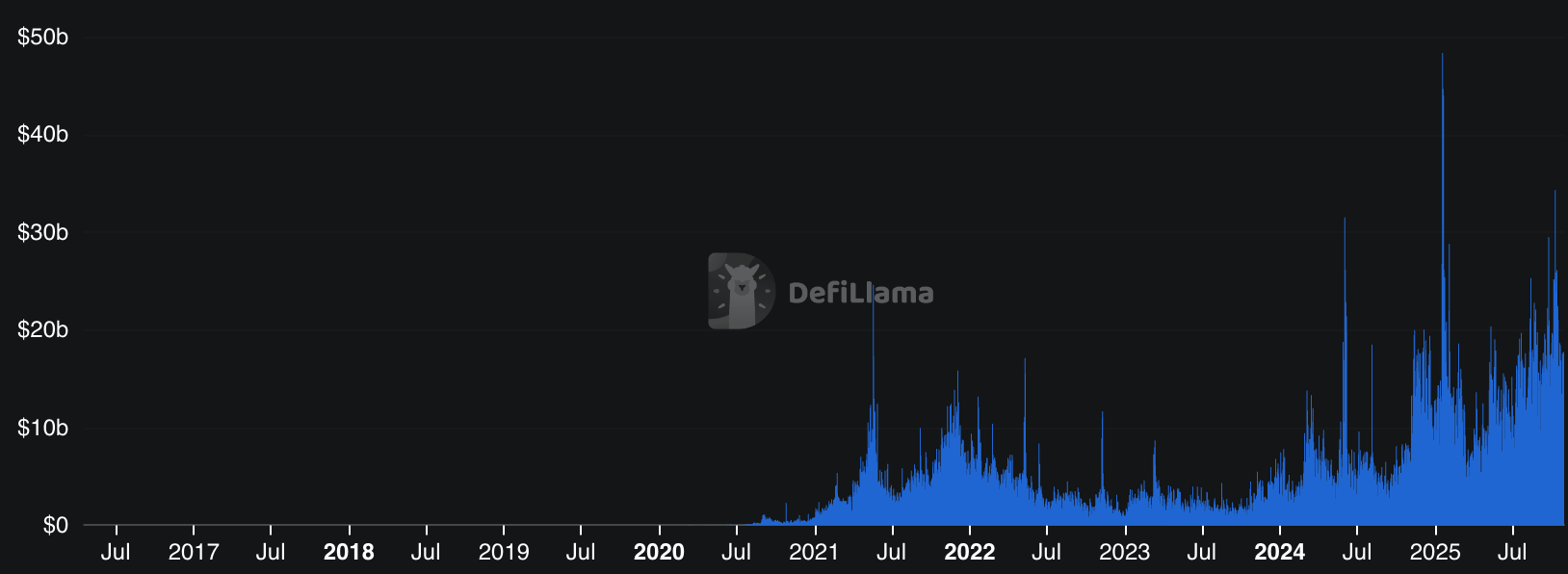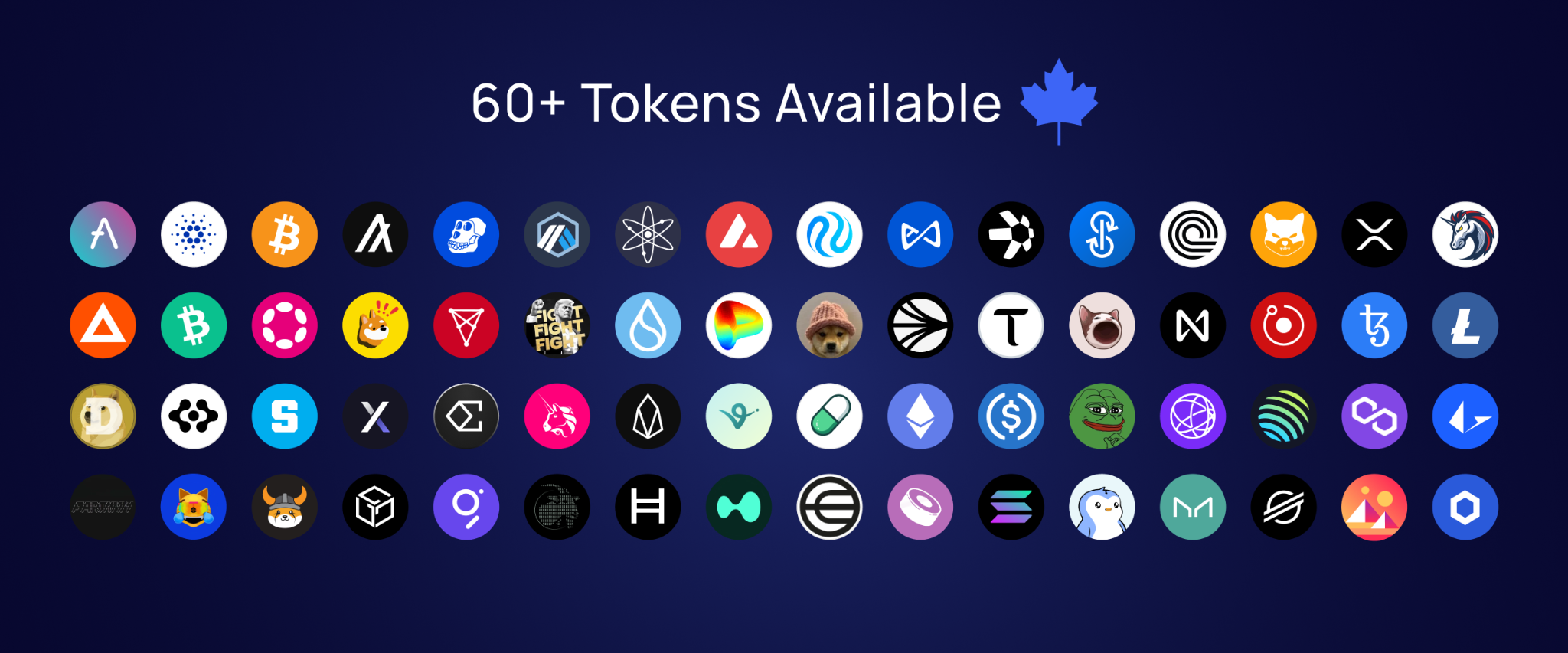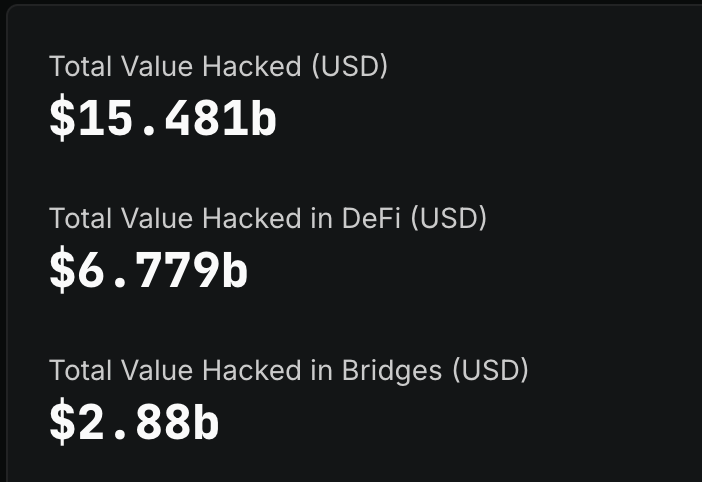Imagine being able to earn interest, borrow funds, or exchange assets without using a bank or brokerage. That is the central idea behind Decentralized Finance, or DeFi.
DeFi refers to a growing ecosystem of financial tools built on public blockchains that aim to replicate and improve on traditional financial services using open-source code. Rather than relying on centralized intermediaries, these systems use software to automate transactions between users directly.
Why DeFi Matters Today

As of October 2025, the total value locked (TVL) in DeFi applications exceeded $150 billion USD, reflecting the amount of assets users have deposited into decentralized platforms. For comparison, this figure was under $1 billion in early 2020, highlighting how quickly participation has grown.
At the same time, traditional high-yield savings accounts in Canada generally pay below 5% APY (1), while many DeFi lending platforms have offered yields between 4% and 15%, depending on supply, demand, and market conditions (2). These higher rates attract users, but they also come with significantly more risk.
The broader significance of DeFi lies not only in potential returns but in access. DeFi applications can be used by anyone with an internet connection and a compatible digital wallet. There is no need for identification, a bank account, or approval from a financial institution. Supporters see this as a step toward more open, borderless and efficient global finance.
Defining DeFi
Decentralized Finance (DeFi) describes a collection of financial applications built on public blockchains that allow people to lend, borrow, trade, insure, or save directly with one another. These services rely on smart contracts which are coded contracts that automatically execute transactions when certain conditions are met.

DeFi aims to make financial systems programmable and transparent. All transactions are recorded on a blockchain, which serves as a shared ledger visible to anyone. In theory, this removes the need for banks, brokers, or payment processors to verify or settle transactions.
How DeFi Works

DeFi systems are built in layers, each performing a distinct role. Together, they form the foundation on which decentralized financial applications operate.
Layer 1: The Blockchain Network

At the base are blockchains such as Ethereum and Solana which serve as shared databases for all transactions. Every interaction in DeFi depositing assets, trading, or borrowing is recorded permanently on these networks.
Each transaction requires a gas fee, a small payment made to the network’s validators or miners for processing and securing transactions. Depending on network demand, these fees can range from a few cents to several dollars.
Layer 2: Smart Contracts
Smart contracts are self-executing pieces of code that define and enforce the rules of a transaction. They remove the need for human intermediaries.
For example, a smart contract might specify:
“If a borrower maintains at least 150% collateral, the loan remains active; otherwise, liquidate the collateral.”
Because smart contracts are deployed on a blockchain, their rules cannot be changed unilaterally. This ensures transparency but also means that errors in the code can have irreversible effects.
Layer 3: Front-End Applications (dApps)

Users typically interact with DeFi through decentralized applications (dApps), which are web interfaces connected to blockchain protocols. Popular examples include Uniswap for token trading and Aave or CRV for lending and borrowing.
These platforms are accessed via crypto wallets such as MetaMask or Rabby Wallet which act as both identity verification and transaction tools. The wallet stores the user’s private keys and the cryptographic proof of asset ownership.
Common Uses of DeFi
DeFi covers a range of financial functions that mirror those in traditional finance but are executed without intermediaries. Below are five of the most common applications in use today.
Earning Yield (Lending and Saving)

DeFi lending platforms allow users to deposit cryptocurrencies, such as USDC or USDT, into lending pools. These pools lend assets to borrowers who provide crypto collateral. In return, depositors earn variable interest. Unlike traditional savings accounts, DeFi yields are not guaranteed and carry the risk of smart contract vulnerabilities or market losses.
Borrowing Against Crypto Holdings
Users who hold digital assets can use them as collateral to borrow other tokens, often stablecoins. This process allows individuals to access liquidity without selling their holdings. However, if the value of the collateral drops below a set threshold, it may be automatically liquidated.
Trading Through Decentralized Exchanges (DEXs)

Platforms such as Uniswap, Curve, or SushiSwap enable users to exchange tokens directly from their wallets. These exchanges use liquidity pools collections of user-supplied funds to determine prices and execute trades automatically.

Unlike centralized exchanges, DEXs do not require user accounts or identity verification, but trades are subject to network fees and potential price slippage.
Providing Liquidity and Earning Fees
Users can contribute to these liquidity pools by supplying pairs of tokens. In return, they receive a proportional share of transaction fees. This can generate passive income, but it also exposes users to impermanent loss, a phenomenon where price changes between paired assets can reduce overall returns.
Looking To Buy Defi Coins?

Netcoins offers a simple and transparent way for Canadians to participate in crypto markets.
The Technology Supporting DeFi
Several components work together to make DeFi possible:
- Smart Contracts: Open-source programs that automate transactions and enforce rules.
- Oracles: Data services such as Chainlink that connect blockchains to real-world information (e.g., current ETH/USD price).
- Layer 2 Solutions: Networks that process transactions off-chain before submitting summaries to the main blockchain. These reduce costs and improve speed.
- Wallets and Keys: A user’s seed phrase and private keys serve as the only means of accessing their assets. Losing them results in permanent loss of access.
Together, these technologies allow DeFi to function without central authority, but they also introduce technical dependencies that must be managed carefully.
Benefits and Limitations
DeFi offers several advantages that appeal to users interested in transparency and accessibility:
- Boarderless: Anyone with an internet connection can participate.
- Continuous Operation: Transactions occur 24/7 without intermediaries.
- Transparency: All activity is visible and verifiable on public ledgers.
- Programmability: Developers can create new types of financial tools quickly.
However, these benefits come with notable limitations. DeFi remains highly technical, volatile, and largely unregulated. User error, such as sending funds to the wrong address or mismanaging private keys, can lead to permanent loss.
Moreover, DeFi’s reliance on cryptocurrencies means that its performance is closely tied to the broader crypto market. When token prices fall, yields decrease, and liquidity can dry up quickly.
Understanding the Risks

- Smart Contract Failures: Errors or vulnerabilities in code can result in lost funds.
- Market Volatility: Rapid price movements can liquidate collateral or alter yields.
- Impermanent Loss: Liquidity providers may see reduced returns when token values diverge.
- No Insurance: Funds are not protected by government-backed insurance programs.
- Regulatory Uncertainty: Legal and tax obligations differ by country.
- Key Management: Losing private keys or seed phrases permanently removes access to assets.
- Fraud and Scams: Some projects are launched without smart contract audits or oversight, increasing risk of fraud.
- High Transaction Fees: Periods of network congestion can make small transactions uneconomical.
The Future of DeFi
DeFi continues to evolve as new technologies and regulations emerge. One significant development is the rise of tokenized real-world assets, digital representations of bonds, real estate, and other traditional instruments. These aim to bridge the gap between conventional and blockchain-based finance.
Institutional involvement is also increasing. Asset managers such as BlackRock and Franklin Templeton have experimented with blockchain-based funds and DeFi integrations, signaling growing interest from traditional finance.
In parallel, regulatory bodies are working to clarify how decentralized systems should be governed. The European Union’s Markets in Crypto-Assets (MiCA) framework is one of the first comprehensive attempts to regulate crypto activities, including some forms of DeFi. Similar discussions are underway in North America and Asia.
Looking forward, advances in automation and artificial intelligence may further integrate with DeFi, enabling “autonomous agents” capable of managing digital portfolios or executing trades according to pre-set strategies.
While DeFi is still an experimental field, it represents a potential step toward more open and programmable financial infrastructure. Its long-term role will likely depend on how effectively it can balance innovation, security, and compliance.
Recourses:
The information provided in the blog posts on this platform is for educational purposes only. It is not intended to be financial advice or a recommendation to buy, sell, or hold any cryptocurrency. Always do your own research and consult with a professional financial advisor before making any investment decisions. Cryptocurrency investments carry a high degree of risk, including the risk of total loss. The blog posts on this platform are not investment advice and do not guarantee any returns. Any action you take based on the information on our platform is strictly at your own risk. The content of our blog posts reflects the authors’ opinions based on their personal experiences and research. However, the rapidly changing and volatile nature of the cryptocurrency market means that the information and opinions presented may quickly become outdated or irrelevant. Always verify the current state of the market before making any decisions.



.png)

.png)
.png)




